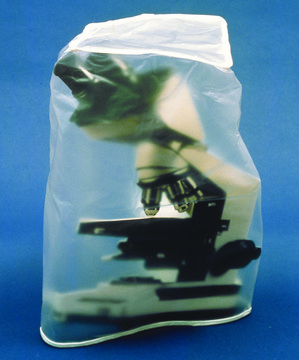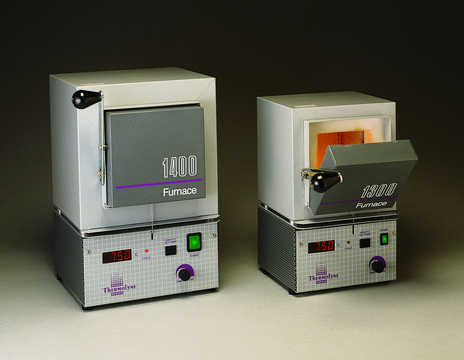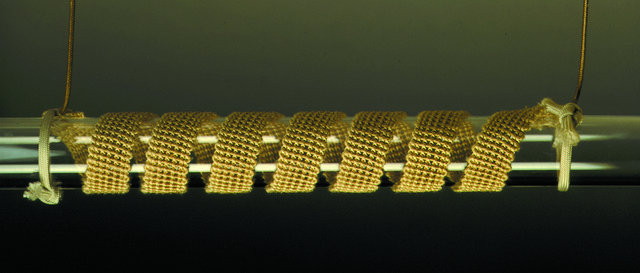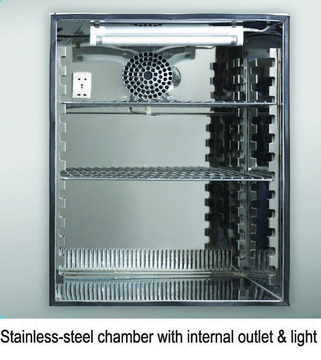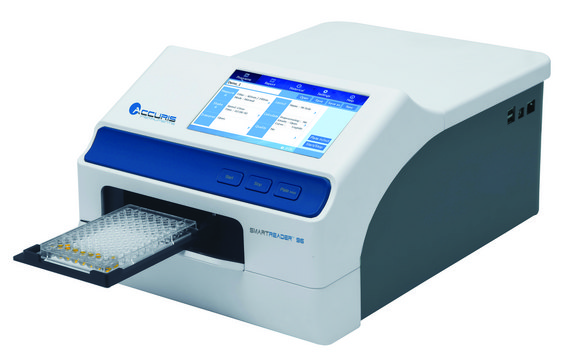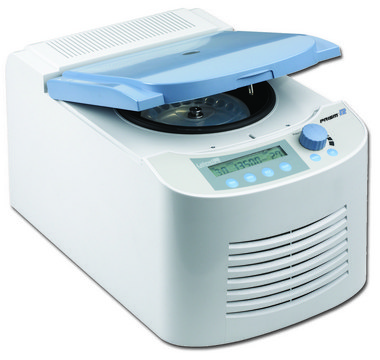Z737496
Jenco™ compound microscopes
AC/DC input 220 V AC, brightfield, achromatic lens, monocular, mechanical stage; led incandescent or fluorescent
Recommended Products
description
3-plug
EU 2-prong plug
manufacturer/tradename
Jenco CP135-M3-2
Looking for similar products? Visit Product Comparison Guide
General description
- Illumination can be a mirror, a rechargeable LED, an incandescent bulb or halogen bulb
- Eye pieces come in monocular heads, or teaching heads for assisting students in finding specimens and also binocular heads for easy viewing with both eyes
- Objectives are offered in multiple quality and quantity levels
- Video systems are available to project images on a screen
- Industry leading 5 year warranty
Legal Information
Regulatory Information
Certificates of Analysis (COA)
Search for Certificates of Analysis (COA) by entering the products Lot/Batch Number. Lot and Batch Numbers can be found on a product’s label following the words ‘Lot’ or ‘Batch’.
Already Own This Product?
Find documentation for the products that you have recently purchased in the Document Library.
Which document(s) contains shelf-life or expiration date information for a given product?
If available for a given product, the recommended re-test date or the expiration date can be found on the Certificate of Analysis.
How do I get lot-specific information or a Certificate of Analysis?
The lot specific COA document can be found by entering the lot number above under the "Documents" section.
How do I find price and availability?
There are several ways to find pricing and availability for our products. Once you log onto our website, you will find the price and availability displayed on the product detail page. You can contact any of our Customer Sales and Service offices to receive a quote. USA customers: 1-800-325-3010 or view local office numbers.
What is the Department of Transportation shipping information for this product?
Transportation information can be found in Section 14 of the product's (M)SDS.To access the shipping information for this material, use the link on the product detail page for the product.
Are demo Jenco™ microscopes available?
Yes, please email us with your desire: mike@jencointernational.com.
Do microscopes just magnify things?
No, microscopes both magnify and clarify. They allow us to see small objects clearly.
What is resolution in microscopy?
Bringing fine details into focus.
What is a Stereo microscope?
A microscope that uses two light paths to give a 3-D view of a large specimen. Mainly used for macro sized or solid samples. Limited magnification range, 10x to 200x.
What is the difference between a Stereo and a Dissecting microscope?
There is no difference. Those are different names for the same microscope.
What is a Stereo Zoom microscope?
A stereo microscope as described above that changes magnification like a zoom lens on a camera, allowing the specimen to stay in focus as magnification changes within a range.
What is a compound microscope?
A microscope with one light path going through compound parts providing high magnification (40x to 1,000x or more). Jenco Model BC-211 (Sigma nos. Z734977 for 115V or Z736945 for 220V) for example.
What is an inverted microscope?
A microscope that looks up at the specimen from underneath the stage. Commonly used in tissue culture with specimens particularly influenced by gravity like cells in suspension. The objective lenses are below the stage. Jenco Model CP-2A1 (Sigma nos. Z723975 for 115V or Z724084 for 220V).
Do eyepieces add magnification for Jenco™ microscopes?
Yes. The standard eyepiece adds 10X magnification and is included in all models.
Do Jenco™ microscopes have the option of increasing magnification through eyepieces?
Yes. All compound microscopes have a 15X option and the Stereo Zoom microscopes have a 15X and 20X option.
What is the difference between monocular, binocular, and trinocular for Jenco™ microscopes?
Monocular microscopes have a single eyepiece, binocular microscopes have two eyepieces, and trinocular microscopes have three eyepieces. The trinocular third eyepiece is generally used for photography and video applications.
What Jenco™ microscopes can be used wiith video or digital camera equipment?
We recommend only those models with trinocular heads because they are more stable and we have adapters to fit the trinocular tube, not the eyepiece, Jenco Model BC-311 (Sigma nos. Z735086 for 115V or Z737062 for 220V).
What is a Polestand on a Jenco™ microscope?
A vertical arm with stereo zoom head attached that sits in a wide streamlined base; used for taller samples, e.g. flowers or machined parts Jenco Model GL7-305 for example. Only vertical adjustment and requires a fiber optic light source and light guide.
What does the working distance on a Jenco™ microscope refer to?
The working distance is measured from the end of the objective to the top of the specimen when the specimen is in focus.
Do Jenco™ microscopes come with built in lighting?
All microscopes come with their own attached lighting except the stereozoom boomstand and polestand.
On Jenco dual illuminated stereo microscopes, where is the fluorescent light located?
The light is on the bottom or base of the microscope.
What is a Condenser on a Jenco microscope?
The piece closest to the light source designed to collect and condense the light and then to focus it onto the specimen.
On a Jenco™ microscope, what does Kohler Illumination do?
Kohler illumination produces an even field of illumination over the whole specimen.
What is an Iris diaphragm on a Jenco microscope?
The piece on the specimen side of the condenser that controls contrast and depth of field.
What is a Stage or Mechanical stage on a Jenco™ microscope?
A flat plate for placing the slide/specimen with controls to easily move the sample both vertically and horizontally in small increments.
What is a Nosepiece or turret on a Jenco™ microscope?
The part of the microscope where the objectives are attached. It is either reversed, with the objectives pointing away from the operator giving better access to the sample, or standard with objectives pointing toward the operator.
What is a Parfocal on a Jenco microscope?
Parfocal means the center of your specimen will stay in focus as you change magnification.
What is an Objective on a Jenco™ microscope?
The part of the microscope that magnifies and resolves the image. It is a lens closest to the specimen. A polished chrome plated component with a barrel shape and threads on one end for threading into the nosepiece.
What is the difference between achromatic, semi-planachromatic, and planachromatic objectives on a Jenco™ microscope?
Each type of objective is color corrected to a higher degree than the previous one. In everyday terms, achromatic objectives afford approximately 80% of the field of view in focus from the center out to the edges. Semi-planachromatic afford approximately 90% and planachromatic afford approximately 100%. The better the color correction, the more cost.
Why do some objectives on a Jenco™ microscope have retractable lenses?
This feature provides protection against damage caused by a collision of the objective and the slide.
What do the numbers on the outside of the barrel of the objective on a Jenco™ microscope stand for?
They identify five specifications: magnification (60X), aberration correction (PlanAchro), coverglass thickness recommended (0.17), numerical aperture (.85), and specialized optical properties (Phase, (PHP), fluorite (FL), etc.
Why use immersion oil on a Jenco™ microscope?
If an objective is designed to use oil, you must use oil to get an acceptable image. Oil provides an improved path for the image to travel between the specimen and the objective.
What objectives can you use immersion oil with on a Jenco™ microscope?
Only those objectives designed for it with an oil specification clearly marked on it's barrel (100X OIL), otherwise the oil creeps up into the microscope causing problems.
How do you use immersion oil on a Jenco™ microscopes?
Put a drop of oil on top of the slide's cover slip; move the objective down until it touches the oil and you have the specimen in focus.
Do Jenco™ inverted microscopes use oil objectives?
No, because the objective is below the slide and the drop of oil could only sit on top of the slide.
What is a LWD objective?
A Longer Working Distance for when you can't get close enough to focus on what you want to see. They are included with Jenco brand inverted microscopes.
Can you put a 4X objective on a Jenco inverted microscope?
Yes, but you must use a frosted filter to be able to get a clear image.
What is a Reticle on a Jenco™ microscope?
A group of lines, shapes, circles, or angles that are inserted in the eyepiece (usually on a disc) that provide either a standard of measurement or a focal point for the observer.
What is a Micrometer on a Jenco™ microscope?
The same as a reticle, only more specific to a group of lines used as a scale for measuring.
What is a Stage micrometer on a Jenco™ microscope?
A graduated scale placed on the stage to be used as a standard of measurement for the specimen.
Can you use a 35mm camera with your Jenco™ microscopes?
We do not suggest using a 35mm Camera as we have found that a digital camera provides a clearer picture.
On the Jenco™ microscope, what is a green filter used for?
Since achromatic objectives are best corrected spherically for green light, a green filter improves the performance of your achromatic objectives.
On the Jenco™ microscope, what is a light blue filter used for?
Blue filters are used to change the color of light from the bulb to a cleaner white light.
Do your Jenco™ microscopes come with rubber eyecups?
Yes.
My question is not addressed here, how can I contact Technical Service for assistance?
Ask a Scientist here.
Our team of scientists has experience in all areas of research including Life Science, Material Science, Chemical Synthesis, Chromatography, Analytical and many others.
Contact Technical Service
